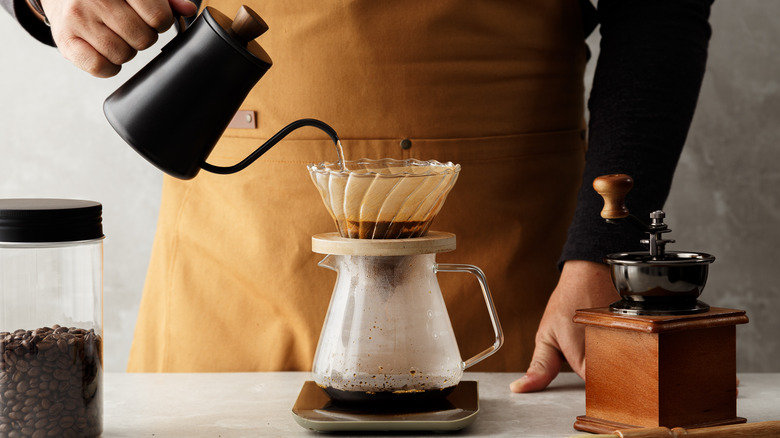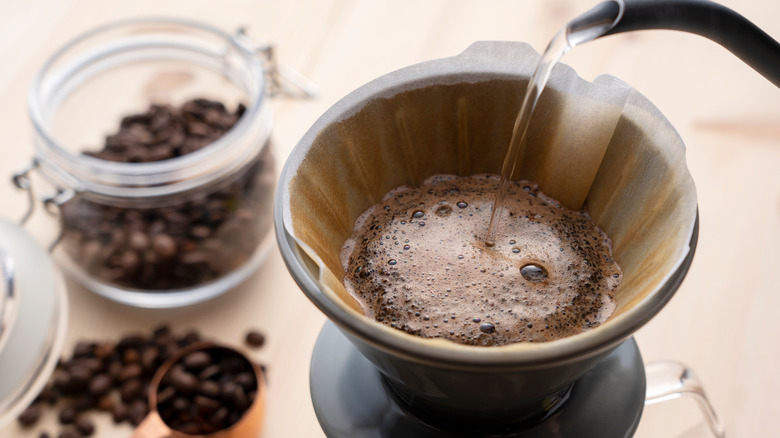Pour-Over Coffee Vs. Automatic Drip: What's The Difference?
If you're anything like the legions of others who busied themselves with perfecting mundane, daily rituals during the pandemic quarantine, you may have also tinkered with how to make the best cup of coffee. When you're stuck inside and desperate to begin each solitary day with as much excitement as possible, a perfect cup of coffee is a good place to start.
While automatic drip is the American standard for coffee production, according to the "Today" show, there has been a growing interest in the pour-over method of coffee brewing. With an automatic drip machine, the user simply needs to add the appropriate amounts of coffee grounds and water, then hit the start button and wait for magic to happen. Meanwhile, the pour-over method is a little more involved on the user's end.
So, why would someone want to create more early-morning, pre-caffeinated work for themselves? It's all in the results.
Pour-over grants more coffee control
Making pour-over coffee requires more effort from the user in each part of the process. If you are picky about your coffee, that means you have more control over the exact kind of coffee you wish to make rather than leaving it up to the automatic drip fates.
To make pour-over coffee, you need a pour-over pot that can support a coffee filter, coffee grounds, and a means of boiling water, like a teapot. After adding your desired amount of coffee grounds in the filter, the addition of boiled water is where things get interesting — and where an infinitesimal variety of choices about your water can alter the cup of coffee you brew.
With pour-over coffee, you can control water temperature, spread, and speed, the first of which will affect how the beans brew, which will then affect the resulting taste, per Taste of Home. As for the spread, automatic drip machines release water onto coffee grounds from several small spigots. When pouring water pour-over style, you can soak beans more thoroughly with one strong stream (Blue Bottle recommends the spiral method of pouring to cover all grounds equally). Taste can also be impacted by the speed at which you brew. The first pour of water in pour-over coffee allows the coffee grounds to "bloom," or release their aromatic gasses and begin the brewing process. You can then decide how much time to wait before adding more water during the next pour.
If you care about perfecting your ideal morning brew, pour-over coffee might be for you!

